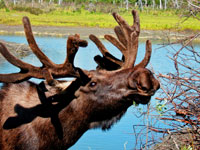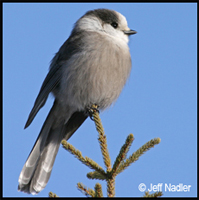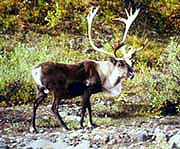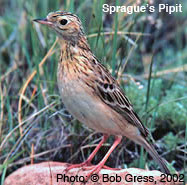
Biodiversity & Species
Manitoba Initiatives
 In 1977, Manitoba agreed to a joint Federal-Provincial implementation of the Convention on International Trade in Endangered Species of Wild Fauna and Flora (CITES). CITES was formalized by the Manitoba government by MOU when WAPRIITA was enacted. In 1977, Manitoba agreed to a joint Federal-Provincial implementation of the Convention on International Trade in Endangered Species of Wild Fauna and Flora (CITES). CITES was formalized by the Manitoba government by MOU when WAPRIITA was enacted.In 1988, Manitoba signed the Recovery of Nationally Endangered Wildlife's (RENEW) strategy. In 1990, realizing that Manitoba had the least amount of land protected from development among Canadian jurisdictions. Manitoba was the first in Canada to commitment to establishing a regional, representative network of protected areas. In 1990, the Manitoba government passed The Endangered Species Act (amended in 1993) to ensure the protection and survival of endangered and threatened species in the province and to enable the reintroduction of extirpated species. In 1994, the Manitoba government established the Manitoba Conservation Data Centre (MBCDC) to assemble and provide information for conserving Manitoba's natural biodiversity. MBCDC assists in conservation planning, natural resource management, environmental impact assessment and general planning for sustainable development. In 1996, the Manitoba government integrated the MBCDC into the Manitoba Conservation Wildlife Branch as part of its commitment towards maintaining biodiversity. The MBCDC is part of the Natural Heritage Network which functions under the umbrella of Nature Serve and Nature Serve Canada. Also in 1996, the Manitoba government signed the federal-provincial-territorial Accord for the Protection of Species at Risk in Canada. The Accord established a mechanism for co-operation among Canadian jurisdictions to protect species at risk throughout Canada. Manitoba Moose Populations Still A Concern Recent aerial surveys in west-central Manitoba show the moose population in the Porcupine and Duck mountain regions remains low but stable. Manitoba Conservation and Water Stewardship announced March 1, 2012, moose hunting was cancelled in the Porcupine and Duck mountain regions, Game Hunting Area (GHA) 13 and 13A, May 26, 2011 after aerial surveys showed sharp population declines.
Recent aerial surveys in west-central Manitoba show the moose population in the Porcupine and Duck mountain regions remains low but stable. Manitoba Conservation and Water Stewardship announced March 1, 2012, moose hunting was cancelled in the Porcupine and Duck mountain regions, Game Hunting Area (GHA) 13 and 13A, May 26, 2011 after aerial surveys showed sharp population declines.Manitoba Conservation and Water Stewardship also put a partial closure in place January 20, 2012 on moose hunting in parts of GHA 26, which stretches from Lake Winnipeg to the Manitoba-Ontario border between the Winnipeg and Wanipigow rivers. Moose populations have declined by almost 50 per cent in this part of the province since 2006. Moose hunting closure areas apply to both licensed hunting and treaty and Aboriginal rights-based hunters. The department says it has consulted local First Nations and Métis people to find solutions and will continue to work with Aboriginal communities and stakeholders to develop long-term plans to address low moose populations across the province. Government biologists, natural resource officers and local First Nations perform the aerial surveys. Several factors can influence the number of moose seen during surveys such as snow depth, temperature and time of year. The 2012 results, combined with results from future surveys, will be used to track the progress of moose population recovery in Manitoba. However hunting and conservation groups feel that more funding and better data is needed. "This perception on the part of Manitoba Conservation personnel is based on discussions with hunters and outfitters, but very little in the way of hard scientific data, such as population surveys. Manitoba Conservation officials require the resources and tools to do their jobs. All decisions concerning wildlife and fisheries need to be made using realistic and current scientific methods and data. The guesswork needs to be taken out of the equation," says Lac Du Bonnet Wildlife Association Vice President Don Halbert. In March 2011, the province announced $800,000 for a moose population recovery plan to help end the decline and restore moose population to sustainable levels across Manitoba. This included funding for:
View March 1, 2012 Government of Manitoba news release View January 26, 2012 Manitoba Wildlife Federation press release View January 20, 2012 Government of Manitoba news release View May 26, 2011 Government of Manitoba news release View May 27, 2010 CBC News article View January 21, 2012 CBC News article Sources: Government of Manitoba, Lac Du Bonnet Wildlife Association
Manitoba Moose-hunting Cancelled Manitoba is cancelling moose hunting in two regions of the province after steep declines in moose populations have been verified.
Manitoba is cancelling moose hunting in two regions of the province after steep declines in moose populations have been verified.Surveys by Manitoba Conservation show moose numbers have fallen as steeply as 65 per cent in several regions since 2000, including around the Duck Mountains, the most popular moose-hunting area, located 400 kilometres northwest of Winnipeg. Cancellation of all moose hunting will apply to Game Hunting Areas (GHAs) 13 and 13A, located on the Manitoba-Saskatchewan near Duck Mountain Provincial Park, for the 2011season. These cancellations are in addition to cancellations previously announced for nearby GHAs 14 and 14A. To allow applicants time to reapply for other areas, the Hunting License draw results date has been changed from July 16 to Aug. 3. "As a conservation measure, cancellation of these moose hunting seasons will remain in place until the populations have reached levels allowing resumption of sustainable hunting. If moose populations decline further, there is a risk the population may not recover or the recovery period will be extended over many years," said Manitoba Conservation Minister Bill Blaikie. In March 2011 the province announced it was directing $800,000 towards dealing with declines in moose populations. The funding included: two new wildlife biologists, additional natural resource officers with better patrol coverage, and a moose advisory committee comprised of local groups, Aboriginal organizations and governments to partner in further development of a moose recovery strategy. The province states it is working co-operatively with all concerned parties to develop a comprehensive moose management plan. Discussions with First Nations, Métis, and stakeholders are ongoing. The sharing of moose population data, reducing access to the areas, increased predator control measures and conservation closures, are all being actively considered. View May 27, 2011 CBC News articleView May 27, Government of Manitoba news release View May 26, 2011 Winnipeg Free Press article View May 26, 2011 Government of Manitoba news release View March 18, 2011 Government of Manitoba news release View Government of Manitoba: Department of Conservation "Big Game Hunting" webpage View Manitoba Model Forest, Committee for Moose Management Source: Government of Manitoba
Heads Up for Manitoba's Birds Manitobans are being asked to help track the health, distribution, abundance, and breeding habits of bird species throughout Manitoba by participating in the creation of the first ever Manitoba Bird Atlas Project (MBAP). Manitobans are being asked to help track the health, distribution, abundance, and breeding habits of bird species throughout Manitoba by participating in the creation of the first ever Manitoba Bird Atlas Project (MBAP)."Anyone with a pair of binoculars and bird watching experience, or even a desire to learn about birds, can participate. You don't need to be an expert--we just ask that you are confident in the identification of the birds you report." Exlains the MBAP webpage. Courses in atlassing techniques are already being offered for those wanting to take part. Anyone interested in taking part can call Project Coordnator Christian Artuso, at 204-945-6816, or visit: http://www.birdatlas.mb.ca/ Although the Manitoba Naturalists Society released a publication, The Birds of Manitoba in 2003, Manitoba is behind other Canadian provinces in initiating a breeding bird atlas. Breeding bird atlases were first started in Europe in the late 1970's, and Saskatchewan had an atlas like project starting in the 1970's. The first official Canadian bird atlas was published by Ontario in 1987. Alberta and the Maritime Provinces published bird atlases in 1992, with Quebec following suit in 1995. Ontario and Alberta both released second editions in 2005, and the Maritimes and Quebec are in the process of likewise publishing a second edition. British Columbia, in 2007, announced that it was launching its own bird atlas program. "It's so important to have a comprehensive data set for the province, and it's something we [Manitobans] don't quite have yet," Artuso told the Winnipeg Free Press. Studies from the U.S., such as the State of the Birds report, indicate that over the past four decades bird numbers have declined across North America due to deforestation, pesticides, urban sprawl, and climate change. This decline in bird specimens is quite literally the canary in the coalmine that is warning us of ailing ecosystems. Obtaining accurate data, therefore, is vital to both: monitoring the health of the planet, and determining where conservation efforts are most needed. "This year, as we celebrate the International Year of Biodiversity - the abundance and variety of life on Earth - we understand that good information and good science are the foundation of good decision-making when it comes to conservation.", stated Winnipeg South, Member of Parliament Rob Bruinooge in the April 9th, 2010 joint press release, Manitobans to Turn Eyes to the Skies in First Provincewide Bird Count. The project is a partnership between government, the private sector, and conservation organizations, including the Province of Manitoba, Environment Canada, Bird Studies Canada, Nature Manitoba, The Manitoba Museum, Manitoba Hydro, and Nature Conservancy Canada. View Manitoba Breeding Bird Atlas websiteView Bird Life International website View April 9, 2010 Government of Manitoba press release View April 10, 2010 Winnipeg Free Press article View The State of the Birds: 2010 Report on Climate Change (PDF) View April 2010 Lac Du Bonnet Leader article Source: Manitoba Breeding Bird Atlas, Bird Life International
|
Endangered Species Act (Manitoba) (ESA)
| The Endangered Species Act (Manitoba) established a mechanism to designate species as endangered, threatened, extinct or extirpated. Species listed under each designation are recommended by the Endangered Species Advisory Committee. The Wildlife Branch is responsible for the Act's administration. View the Endangered Species Act (Manitoba) There are 34 species of plants and animals currently listed as being endangered, threatened or extirpated under Manitoba's Endangered Species Act. 15 species have been added to the list since 1999. View Species Listed Under the Manitoba Endangered Species Act Records on Manitoba's species at risk (including their known habitat) are maintained in the Biological Conservation Data system of the Wildlife and Ecosystem Protection Branch. Visit the Manitoba Conservation Data Centre Woodland Caribou Listed For some years, conservation groups, federal officials, and even the paper company Tembec - which holds tenure within some areas of the animals' range - have expressed concern for the status of woodland caribou in Manitoba and have lobbied for its designation under the Manitoba Endangered Species Act.
For some years, conservation groups, federal officials, and even the paper company Tembec - which holds tenure within some areas of the animals' range - have expressed concern for the status of woodland caribou in Manitoba and have lobbied for its designation under the Manitoba Endangered Species Act.On June 8, 2006, Conservation Minister Stan Struthers finally made good on his promise (made repeatedly over the last few years) to recognize the threatened status of woodland caribou under Manitoba's endangered species legislation. The designation affords some protection for the species and requires the Manitoba government to take action to safeguard the woodland caribou. Woodland caribou were assessed by Committee on the Status of Endangered Wildlife in Canada (COSEWIC) as being a 'Vulnerable' species in 1984, and in 2003, the federal government listed woodland caribou as 'Threatened' under Schedule 1 of the federal Species At Risk Act. The Manitoba Endangered Species Advisory Committee assessed the status of boreal woodland caribou in Manitoba as 'Endangered' in 1994 and in 2002, the status was reassessed as 'Threatened', excluding coastal populations. Boreal woodland caribou were once found throughout Manitoba's boreal forest. Manitoba's woodland caribou population has decreased by 50% since 1950 and the animals have disappeared from the southern parts of their historical range. The decline has occurred as a result of human activities that impact caribou habitat, as well as because of increased predation, parasites, diseases, and uncontrolled hunting. In Manitoba, an estimated 1,800 to 3,200 of the animals live east of Lake Winnipeg, in the Interlake, and in the North. View June 8, 2006 Manitoba Government press release  Download Threatened, Endangered and Extirpated Species Regulation, 124/2006, June 12, 2006 (PDF) Download Threatened, Endangered and Extirpated Species Regulation, 124/2006, June 12, 2006 (PDF)View Manitoba Conservation's Boreal Woodland Caribou Fact Sheet Source: Government of Manitoba
Manitoba Adds Five New Species to ESA List The Sprague's pipit, hairy prairie-clover, buffalo grass and hackberry were confirmed as threatened species and the Ross's gull was officially declared as endangered under Manitoba's Endangered Species Act by a June 23, 2007 regulation. Conservation Minister Stan Struthers made the announcement on June 11, 2007.
The Sprague's pipit, hairy prairie-clover, buffalo grass and hackberry were confirmed as threatened species and the Ross's gull was officially declared as endangered under Manitoba's Endangered Species Act by a June 23, 2007 regulation. Conservation Minister Stan Struthers made the announcement on June 11, 2007. The newly listed species require protection under the Endangered Species Act because of limited distribution, low numbers or their dependence on specialized habitats. View the June 11, 2007 Government of Manitoba press release  Download Regulation 77/2007, issued June 23, 2007 (PDF) Download Regulation 77/2007, issued June 23, 2007 (PDF)Source: Government of Manitoba |
Conservation Data Centre (CDC)
| The Manitoba Conservation Data Centre (CDC) includes data about species that are rare or in need of further research as well as all species that are listed under the Endangered Species Act - Manitoba (ESA) and have a recommendation by the Committee on the Status of Endangered Wildlife in Canada (COSEWIC). Data from a wide range of field work is available through the CDC. Each species is evaluated and ranked by the CDC based on their range-wide (global) status, and their province-wide status according to a standardized procedure used by all Conservation Data Centres and Natural Heritage Programs. Ranks determine protection status and data collection priorities and are revised with new information. Visit the CDC web site |
Biodiversity Strategy
Canada's Biodiversity Strategy guides Canada in its actions to fulfill commitments made when Canada signed the Convention on Biological Diversity. The Strategy is also the context for Canada's international report of its actions under the CBD. Each province in Canada also has responsibilities under the Biodiversity Strategy. Download Canadian Biodiversity Strategy (DOC) Download Canadian Biodiversity Strategy (DOC)Visit the Canadian Biodiversity web site |
Caribou Strategies
Species Ranking Chart - Manitoba
Biodiversity & Species Links,
 2002-2014
2002-2014

